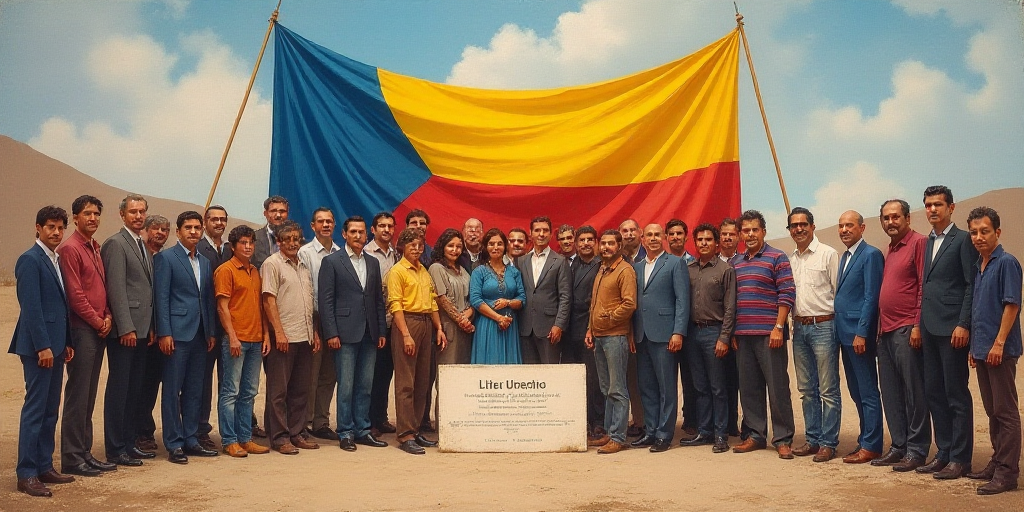Introduction to the Fiscal Plan for 2026
The administration of Claudia Sheinbaum will need to continue fiscal consolidation in the following year, despite failing to meet this year’s target due to budget cuts, according to the Paquete Económico 2026 presented by the Secretaría de Hacienda y Crédito Público (SHCP).
Key Fiscal Indicators for 2026
Édgar Amador Zamora, the Secretary of Hacienda and Credit Publico, delivered the Paquete Económico 2026 to the Chamber of Deputies, outlining the main macroeconomic variables and income and expenditure estimates for the upcoming year.
According to the Criterios Generales de Política Económica (CGPE) 2026, the Requerimientos Financieros del Sector Público (RFSP) will be at 4.1% of the Gross Domestic Product (GDP), lower than the historical level of 5.7% observed in 2024.
“This adjustment will not only allow for a stable trajectory of public debt but also provide certainty to the population, markets, and the international community about the government’s commitment to fiscal sustainability in Mexico,” stated the department.
Fiscal Deficit and Adjustments
Despite budget cuts reported throughout 2025, the fiscal deficit is expected to be at 4.3% of GDP for this year, exceeding the 3.9% approved by the Union Congress.
The adjustment, according to Hacienda, reflects “revisions to the macroeconomic framework due to a less favorable external environment, as well as adjustments in projections for the closure of state-owned enterprises and institutions of social security”.
Economic Growth Projections
The estimates for the following year are made within a growth range of 1.8% to 2.8%, better than the previous estimate of 1.5% to 2.5%. This is due to the expectation that global uncertainty will moderate in 2026.
“Although global uncertainty persists, it is expected to moderate throughout 2026. This more favorable environment, along with public spending focused on social programs and investment projects with positive effects on aggregate demand and potential growth, supports a prudent growth forecast for the upcoming year,” explained the official.
Increase in Public Spending
Contrary to this year, where public spending cuts dominated to achieve fiscal consolidation, for 2026 an increase of 5.9% in total net spending is expected, resulting in 10.1 trillion pesos for the following year, according to the Proyecto de Presupuesto de Egresos de la Federación (PPEF) 2026.
Prioritized Social Programs and Projects
The Paquete Económico showed that, for the following year, there will be 14 prioritized social programs absorbing 987.16 million pesos.
- The star program will again be the Pension for Elderly Adults, with an expenditure of 526.508 million pesos.
- The Benito Juárez Scholarship Program follows closely with 184.595 million pesos.
On the side of projects, Hacienda listed a total of 13, with a proposed expenditure of 536.806 million pesos. Petróleos Mexicanos (Pemex) stands out as one of the projects with the highest investment, at 247.23 million pesos.
Miscellaneous Fiscal Measures and Debt
Regarding public revenues, the Iniciativa de la Ley de Ingresos de la Federación (ILIF) proposes resources amounting to 8.7 trillion pesos, a 6.3% annual growth.
To achieve the projected revenues, the ILIF comes alongside a Miscellaneous Fiscal measure, which includes changes to the IEPS law regarding sugary drinks, soft drinks, and tobacco, an 8% tax on video games, as well as modifications in matters of foreign trade and the Federal Fiscal Code.
On the side of petroleum revenues, the estimate for the following year is 1.2 trillion pesos, a 1.9% growth compared to this year’s approval.
Tax revenues will be 5.8 trillion pesos, a 6.5% increase compared to this year.
“The income policy will be oriented towards strengthening tax efficiency – through mechanisms of prevention, detection, and sanction of tax evasion and avoidance – to ensure that taxpayers make a fairer and more equitable contribution. Additionally, in 2026, the tax base will be expanded through a series of provisions that contribute to safeguarding the physical and mental health of the population, while incorporating support measures for various sectors to promote the country’s economic development,” detailed Hacienda.
Meanwhile, the government requested an internal debt ceiling of up to 1.78 trillion pesos for the following year, while external debt requested was 15.5 billion US dollars.
Key Questions and Answers
- What is the Paquete Económico 2026? The Paquete Económico 2026 is a fiscal plan outlining Mexico’s economic strategy, revenue estimates, and expenditure projections for the following year.
- Why is fiscal consolidation necessary? Fiscal consolidation aims to reduce budget deficits, stabilize public debt, and ensure fiscal sustainability for the country.
- What are the projected economic growth rates for 2026? The estimated economic growth rate for 2026 ranges between 1.8% and 2.8% of the Gross Domestic Product (GDP).
- How will public spending change in 2026? Public spending is expected to increase by 5.9% in 2026, with a total net spending of 10.1 trillion pesos.
- What are the prioritized social programs and projects for 2026? Fourteen social programs will receive funding, with the Pension for Elderly Adults and Benito Juárez Scholarship Program being the most significant. Thirteen projects, including Petróleos Mexicanos (Pemex), will also receive substantial investments.
- What are the proposed fiscal measures and debt limits? The Iniciativa de la Ley de Ingresos de la Federación (ILIF) proposes 8.7 trillion pesos in revenue, with changes to the IEPS law and an 8% tax on video games. The government has requested a domestic debt ceiling of up to 1.78 trillion pesos and external debt limits of 15.5 billion US dollars for 2026.






